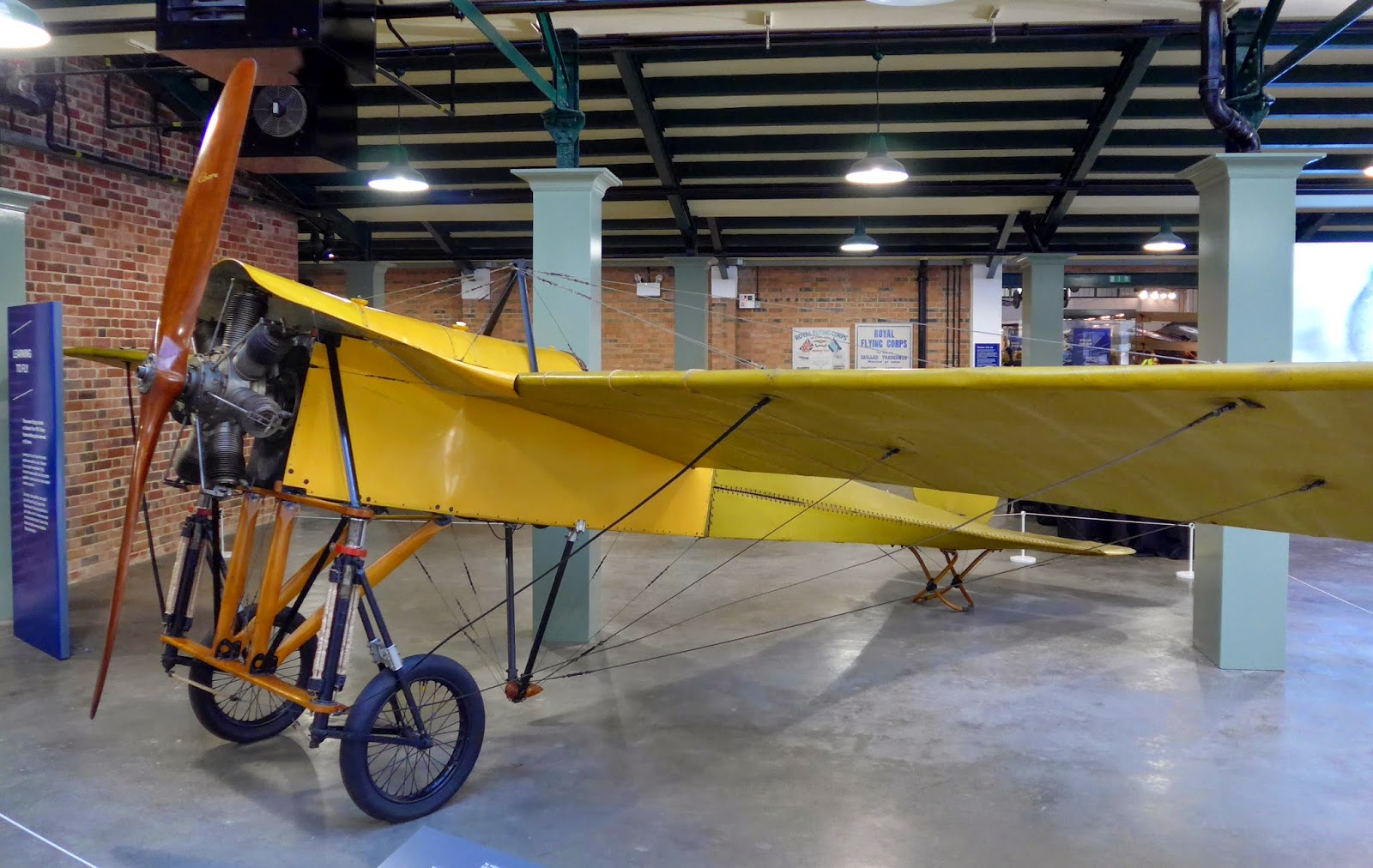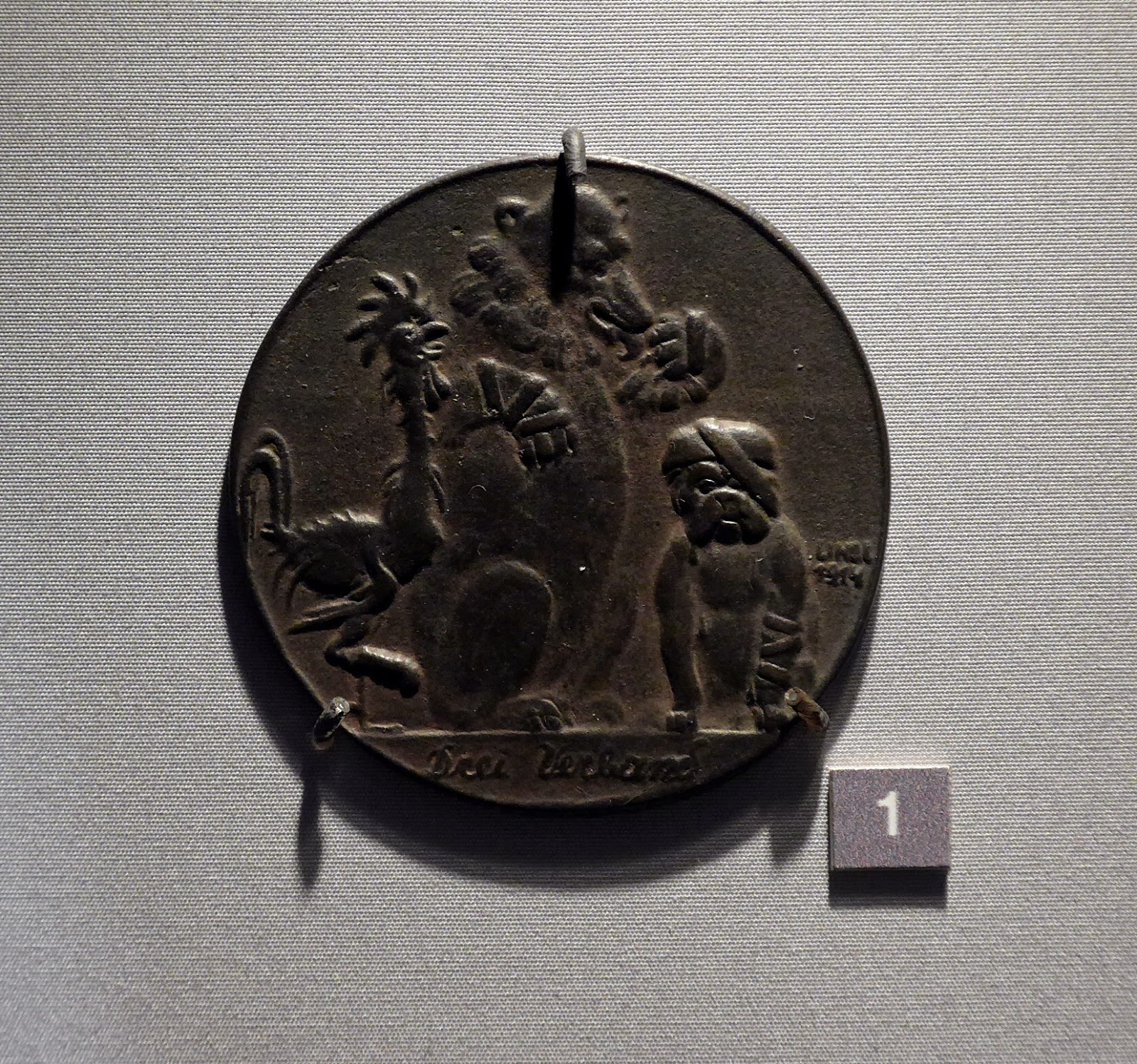First World War in the Air is a new permanent exhibition at the Royal Air Force Museum, London.
And there is plenty to see in the air and on the ground.
The grade II listed building housing this exhibition, was once one of the factories where aircraft were developed and made for the First World War. It was brought here brick by brick from three miles away. It's huge.
The exhibition tells the story aviation and its contribution to the First World War. There are so many stories and I was struck by the technology behind the planes, how it advanced during the war, and also the bravery of the men who flew these planes.
I say bravery with the benefit of hindsight, where on the few occasions I've been in a plane, I have actually read the safety manual and watched as the crew pointed out the emergency exit doors. Trusting in this new technology, they might have felt as safe as houses.
This is the Bleriot XXVII
Not a military plane, built just before the war, it was built for speed, for racing, not for war.
With wheels that look a little like bicycle wheels,
and the skin, made of fabric, doped and sewn together.
Reminds me of old canvas tents.
This is the Cauldron G3 first built in 1914.
To my untrained eye, it looks like they've left the middle bit out. But it worked and was used for training and reconnaissance.
The RAF as we know it was formed in 1918 during the First World War, the merging of the Royal Flying Corps and Royal Naval Air Service.
New logo, still stitching the planes together.
To begin with the planes were used for reconnaissance, for watching the enemy, but evolved to be used for fighting.
The story goes that servicemen, whilst in the air, came up with a few novel ideas for attacking the enemy. These ranged from shooting at each other with pistols, throwing fruit and dropping darts on the enemy below.
See, the RAF museum provides oranges to throw at the enemy in the kid's interactive.
Or you can sit at the front with the machine gun.
This was actually quite tricky and demanded more of my stomach muscles than it should have.
First World War in the Air charts the development of aviation technology during the war and tells us how the industry grew from small beginnings. In Britain in 1914 fewer than 250 planes were built, by the end of the war, more than 600 were being built every week.
There was a rapid growth in the aircraft industry, providing jobs for women, filling the places of conscripted men.
The numbers tell that story too. Military aviation began with 2,073 people,
yet 9,349 lost their lives.
First World war in the Air, a new permanent gallery, opened Dec 4th 2014 and is well worth a visit. It is just one exhibition on the site of the RAF Museum, London, there's much more to explore.
Free admission. Details on the website here.
Update
Just had an email from my step-father, filling in the gaps in my knowledge.
This is the reason why the Cauldron G3, above, had a bit missing in the middle.
"The reason that they left the part behind the cockpit unfinished was
that the engines were not powerful
and crosswinds turned the plane in flight,
so not to give the wind somewhere too push at."
Brilliant!


















.JPG)




































